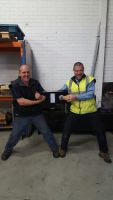Loadcells
Calwest Services staff have the experience and knowledge to repair any load cell from damaged plugs and mechanical faults to electronic faults. All repairs are performed in-house, then tested and calibrated to ensure you the integrity of your instrument.
Whilst minor repairs are a normal part of our calibration work, we also offer repair services for more extensive damage. Sometimes your load cell is so unique that the device cannot be replaced. Calwest Services are able to repair faulty load cells at strain gauge level. In extreme cases, we are able to clean and regauge a load cell.
If your load cell is beyond repair, we are able to advise you on a suitable replacement and supply a new load cell through our sister company, Loadcell Supplies.
To ensure accuracy and instrument reliability, Calwest Services recommends the following preventive maintenance and usage guide:
Usage Guide
- Select a load cell that is appropriate for the task. Consider dimensional constraints as well as expected loads. Always work in a safety factor to prevent overloading.
- Check that the mounting surface is clean and flat. This will help prevent incorrect loading and thus erroneous values.
- Ensure that the load cell is aligned correctly, and be inline and central to the load. Eccentric or angular loading will distort data and risk damage to personnel and the instrument.
- Select fasteners that will withstand peak loads. If too weak, bolts will fatigue and snap whilst under load, causing system damage. If you are unsure about which fasteners to use, search for an online bolt strength chart or seek expert advice. As a rule of thumb – always use Grade 8.8 bolts.
- If performing a system test, carefully consider the set-up. Whilst under load, a combination of load cell, hydraulic cylinder, and packers can become unstable and prone to collapse. If necessary, it is recommended to manufacture a suitable frame to minimise the gap between the test surfaces, and avoid the use of packers.
Preventive Maintenance
- Clean the load cell after every use to prevent rust and caking.
- Be mindful of the cable. Do not pull, twist, or pinch the cable, and ensure it is secure and out of harm’s way. If not possible, consider using a cable sleeve.
- If being exposed to the elements, create a drip-loop on the cable that allows water to flow away from the load cell.
- If the load cell was dropped or overloaded, check the zero value before further use, have the instrument recalibrated if not returning to zero.
- Depending on use, it is recommended that a load cell is calibrated and serviced annually or biennial.
- When not in use, store the load cell in a dry and humid-free place, preferably in a protective case.
For more information on load cell calibration and repairs, call Calwest Services on (08) 9451 5070.




